
The interior sculptural décor was created by Pietro Perti (Italian master) in 1700-1705. Twin towers were built on in the 18th century. It was built by the efforts of Casimir Sapieha the Younger (1637-1720) in 1694-1717 On the façade frieze two Christian soldiers taken into captivity by the Muslims are represented. The main goal of the Trinitarian Order was returning such captives to their homelands The church has an impressive cupola (dome), the interior is adorned with stucco relief works and sculptures - a large part of them is survived. The church is a "sister" to the Church of St. Peter and St Paul in Vilnius (Antakalnis)All photos are copyrighted by Vladislav B. Sotirovic© Vladislav B. Sotirovic 2019
Continue Reading
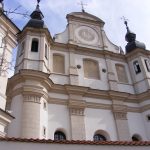
The church was financed by Grand Chancellor of the Grand Duchy of Lithuania, Grand Hetman, and Vilnius Voivode - Lew Sapieha, who had converted to Roman Catholicism from Calvinism. He was one of the most influential nobles in the Grand Duchy of LithuaniaLew Sapieha gave the church and surrounding buildings for the Bernardine nuns to have a convent and built a Sapieha family mausoleum in the churchThe convent was also a place where the daughters of rich aristocrats were taught. Today, the Church Heritage Museum operates in the churchAll photos are copyrighted by Vladislav B. Sotirovic© Vladislav B. Sotirovic 2019
Continue Reading

Its foundations are superimposed on the remains of a square tower, one of the oldest brick buildings in Lithuania, whose bricks are bound in the pre-Cothis (Baltic) manner An oval four-story tower with loopholes was built on these remains. Originally, it was a defensive tower of the Lower CastleThe underground square part dates from the 13th century, and the round part - from the late 14th century All photos are copyrighted by Vladislav B. Sotirovic© Vladislav B. Sotirovic 2019
Continue Reading

The building was noted for its stately late Baroque appearance. Michelangelo Palloni and Pietro Perti are thought to be the authors of the decorationsNoteworthy is an interesting Baroque pediment with a stucco bas-reliefA courtyard of the estate. Today, the buildings belongs to the Lithuanian Academy of Music and TheatreAll photos are copyrighted by Vladislav B. Sotirovic© Vladislav B. Sotirovic 2020
Continue Reading

The entrance to the courtyard in which the Judenrat (Jewish Council) was located during WWII in the Large Jewish Ghetto in VilniusThe building of the Judenrat which functioned from September 1941 to September 1943 within the Large Jewish Ghetto that was formed around Rūdninkų SquareHebrew inscription above the windows on a former Jewish shopAll photos are copyrighted by Vladislav B. Sotirovic© Vladislav B. Sotirovic 2019
Continue Reading

One of Baroque gates of the Sapieha ParkAmong the surviving details of the palace are Baroque façades with stucco relief works by Pietro Perti and three Baroque gates. The park is the only one in Vilnius Vilnius with features of a regular Baroque park The palace and the gates were decorated with sculptures and frescoes created by masters who had worked in the Church of St. Peter and St. Paul and St. Casimir's Chapel of the Cathedral Basilica in VilniusAll photos are copyrighted by Vladislav B. Sotirovic© Vladislav B. Sotirovic 2019
Continue Reading

A geographical centre of Europe - 25 km far from Vilnius. From 2015 Summer You will get a special Certificate that you have visited the Geographical center of Europe. Don't miss the chance to get it for freeThe Baltic States of Europe - Estonia, Latvia & LithuaniaVytis (The Knight) - The Coat of Arm of both historical Grand Duchy of Lithuania and present-day the Republic of LithuaniaOrigins of images: Facebook, Twitter, Wikimedia, Wikipedia, Flickr, Google, Imageinjection & Pinterest.Read our Disclaimer/Legal Statement!Donate to Support UsWe would like to ask you to consider a small donation to help our team keep working.
Continue Reading

The Church of the Assumption is one of the Vilnius' most beautiful Baroque churches and most mature building of the Vilnius' Baroque schoolConstruction on the church began in 1695 and the final work was carried out by Vilnius' Baroque architect Johann Christoph Glaubitz (1700-1767) in 1750-1756The front façade is adorned by a domical rotunda vestibule, and two elegant towers with clocks All photos are copyrighted by Vladislav B. Sotirovic© Vladislav B. Sotirovic 2019
Continue Reading

The Church of the Heart of Jesus is a significant monument of Baroque (finished in 1756). It is the only Roman Catholic church in Lithuania to be built along a Greek Orthodox cross designThe church has a large octagonal cupola (dome) and a very reach the elegant exterior. The interior is no less magnificent, although it was severely damaged during the Soviet timeAfter 1945, a prison was established in the church and convent buildings. The church interior and the plan of the convent buildings were transformed. After 1990, the sacral buildings are returned to their former ownersAll photos are copyrighted by Vladislav B. Sotirovic© Vladislav B. Sotirovic 2020
Continue Reading
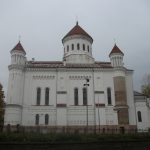
The church is endowed by Juliana, the wife of Lithuania's Grand Duke Algirdas (1345-1377) and mother of Lithuania's and Poland's ruler Jogaila. Grand Duke of Lithuania Jogaila baptized Lithuania in 1387. She was buried in the churchFragments of Gothic masonry have survived in the bottom part and in some segments up to the top. The present façades and the cupola imitate Georgian medieval architectureIn 1415 the church was transformed into a cathedral. In 1511-1522 it was reconstructed by Prince Constantine Ostrogsky. In 1516 Helen (a Russian Orthodox), wife of Alexander Jagiellon (Polish King and Lithuanian Grand Duke) was buried there. In 1609 the cathedral was given to the Uniates (Greek Catholics). In 1865-1868 it rendered its present appearance, and it began to function as a church again All photos are copyrighted by Vladislav B. Sotirovic© Vladislav B. Sotirovic 2018
Continue Reading
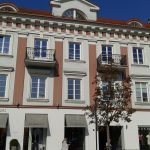
A plaque above the entrance to the courtyard of the house in which Mark Antokolski lived in the Old Town of VilniusThe inner courtyard of the house in which Mark Antokolski livedMark Antokolski returned to Vilnius every summer while studying at the Imperial Art Academy in St. Petersburg in the years 1862-1868All photos are copyrighted by Vladislav B. Sotirovic© Vladislav B. Sotirovic 2019
Continue Reading
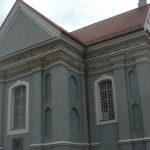
St. Lazarus' almshouse operated in this church, plague and famine victims were buried there. In 1715, the church and the monastery were given to the brethren of St. Rochus who tended to sick people, and in 1752 - to the sisters of MaryIn a cemetery at the church many outstanding people were buried, among others architect Laurynas Stuoka-Gucevičius. A memorial plaque to him is set up on the south façade of the church. However, later the cemetery was turned into a storage site of construction materialsThe church was severely damaged during a fire in 1794. The church was reconstructed and slightly transformed in 1801-1806. In 1864, the convent was closed down, and the buildings converted into a prisonAll photos are copyrighted by Vladislav B. Sotirovic© Vladislav B. Sotirovic 2020
Continue Reading

The Galera Gallery in the Užupis Art Incubator also operates there, where exhibitions of various kinds of art are organizedGalera of Užupis is an Alternative art gallery. That is a place similar to the former Christiana district in Copenhagen in DenmarkThe Užupis district and its Art Incubator are separated from the Old Town in Vilnius on three sides by the River Vilnia, and by a high hill on the fourth sideAll photos are copyrighted by Vladislav B. Sotirovic© Vladislav B. Sotirovic 2020
Continue Reading
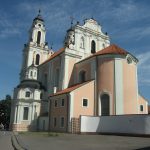
It was built by the Benedictine Sisters near their convent. It acquired its present-day appearance after a great fire in Vilnius in 1737. The church has a rich interior decorated with stucco mouldings and artificial marble. Today the church is restored and adapted for concerts. It also hosts the International Christopher Summer Music FestivalFlanking the church on Vilniaus Street, a particularly elegant Chapel of Providence was erected in 1641 and rebuilt in 1746The single-nave church has 9 magnificent Late Baroque altars and a pulpitAll photos are copyrighted by Vladislav B. Sotirovic© Vladislav B. Sotirovic 2018
Continue Reading

At the egde of Vingio Park, stands a Classical chapel built by Governor Nikolai Repnin for his wife in 1799-1800Behind the chapel, one can find the restored graves of the German, Russian, Polish, Turkish and Austro-Hungarian soldiers killed in both world wars A monument to the soldiers of the Central Powers killed in WWI in Vingio ParkAll photos are copyrighted by Vladislav B. Sotirovic© Vladislav B. Sotirovic 2020
Continue Reading

The architect whose name is most closely associated with Vilnius University is the Jesuit Tomas Zhebrauskas who founded (together with Elžbieta Oginskaitė-Puzinienė, the daughter of the famous manor owner Mykolas Oginskis) and designed the observatory, in 1753. The White Hall belongs to the observatory The astronomical observatory of Vilnius University is one of the oldest in Europe and the oldest in the former Polish-Lithuanian Commonwealth. It was famous in Europe for its astronomers and their works until it was closed after the fire of 1876The White Hall today is, in fact, a reading room of the Library of Vilnius UniversityAll photos are copyrighted by Vladislav B. Sotirovic© Vladislav B. Sotirovic 2023
Continue Reading
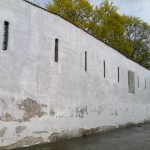
It was not until 1503 when Grand Duke of Lithuania and King of Poland Alexander Jagiellon granted a privilege that the construction of the wall began. The year 1522 is considered to mark the end of the construction, when Grand Duke of Lithuania Sigismund the Old exempted the residents of Vilnius from the duty of keeping guard at the castle and ordered 24 guards to be posted at the city gatesThe length of the defensive wall was 2,5 kilometres having 10 gates. The wall surrounded the territory of today's Old Town, approximatelly 100 hectars. The foundation of the defensive wall was built of stone, and bricks were mainly used at the level of loopholes and higher. The was was adapted for defence with gunpoweder-operated firearms Until the late-18th century, the Vilnius defensive wall was frequently renovated. The wall served for the last time in 1794 during the uprising led by ...
Continue Reading

Mindaugas Bridge is constructed in 2003. It has the name of the only Lithuanian King crowned on July 6th, 1253On the foothill on the left riverside of Neris, there is a Renaissance building of Old Arsenal followed by the buildings of House of the Castle Keeper and New Arsenal On the right riverside of Neris, a new business center of Vilnius is growing during the last two decadesAll photos are copyrighted by Vladislav B. Sotirovic© Vladislav B. Sotirovic 2019
Continue Reading

The church is inconspicuous from the street, as its façade does not face the streetThe 51 meter-tall dome can be seen from seven Old Town streetsThe Dominican Church of the Holy Spirit is one of the most magnificent churches in Vilnius. It is an excellent monument of high and late Baroque All photos are copyrighted by Vladislav B. Sotirovic© Vladislav B. Sotirovic 2018
Continue Reading
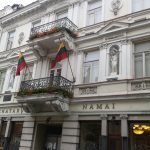
A museum operates today in the House of Signatories, along with a memorial hall where the act of Lithuania's independence was signed on February 16th, 1918 when Lithuania was under the German occupation and administration during WWI (1915-1918)The first floor of the house with statues symbolizing agriculture and fishing is very decorative. Niches on the second floor hold two male bustsHaving acquired this house in the late 19th century, Karol Sztral reconstructed it according to architect Aleksei Polozov's project in the style of HistoricismAll photos are copyrighted by Vladislav B. Sotirovic© Vladislav B. Sotirovic 2019
Continue Reading
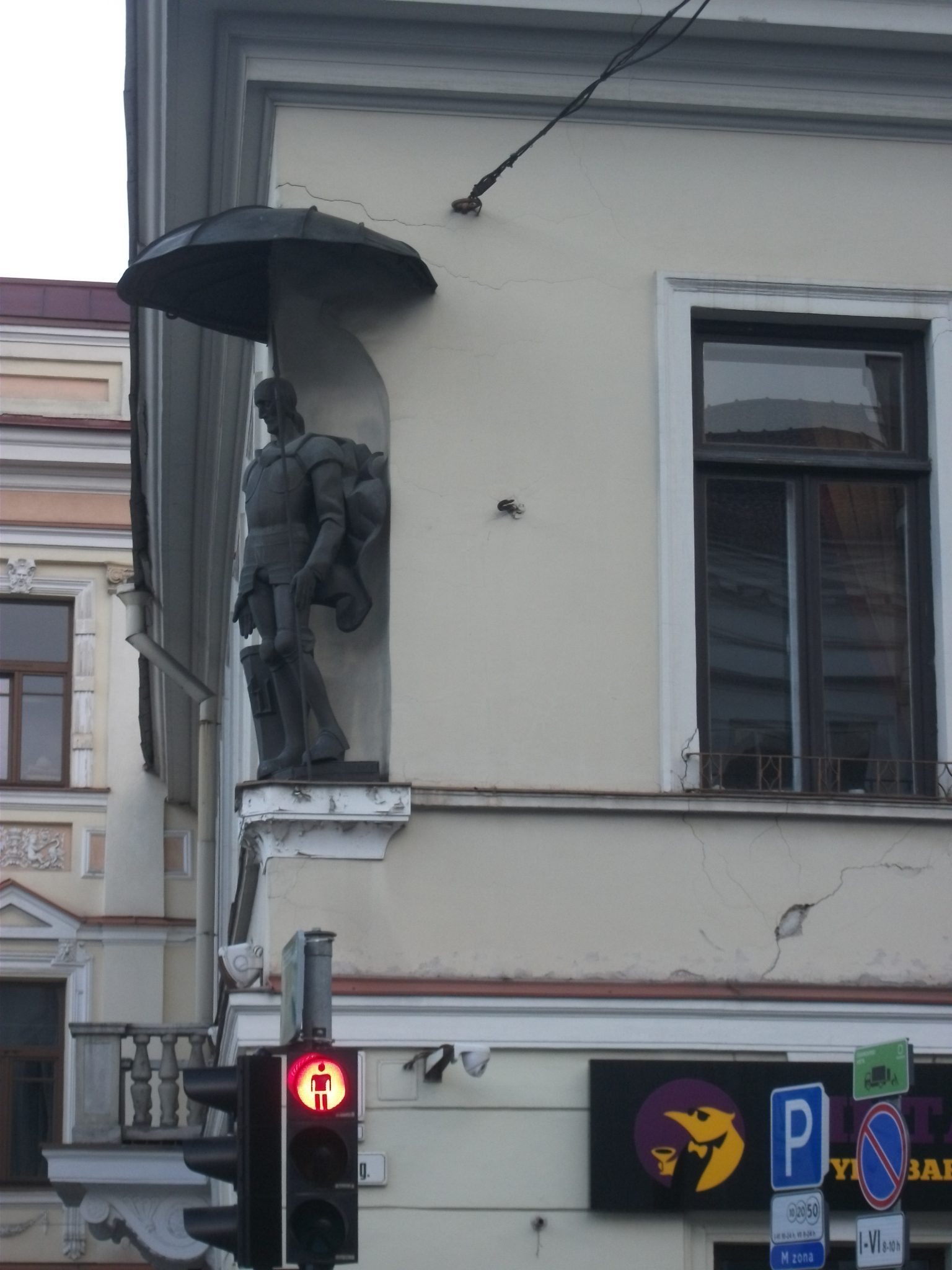 Trakų St. finishes where it meets Pylimo St, which runs along the course of the old city wall. There used to be a gate here, which was pulled down together with the wall at the very beginning of the 19th century. In the niche of the Umiastowski estate (Trakų St. 2) there is a Statue of “The City Guard” (1973)
Trakų St. finishes where it meets Pylimo St, which runs along the course of the old city wall. There used to be a gate here, which was pulled down together with the wall at the very beginning of the 19th century. In the niche of the Umiastowski estate (Trakų St. 2) there is a Statue of “The City Guard” (1973)  In Trakų Street, there is the Church of Our Lady of the Assumption that was founded here by the noble Goštautas family in 1387, the same year as Lithuania became converted to Christianity. However, it is believed that the church with the monastery existed even earlier
In Trakų Street, there is the Church of Our Lady of the Assumption that was founded here by the noble Goštautas family in 1387, the same year as Lithuania became converted to Christianity. However, it is believed that the church with the monastery existed even earlier One of courtyards of the buildings in Trakų Street
One of courtyards of the buildings in Trakų Street






















